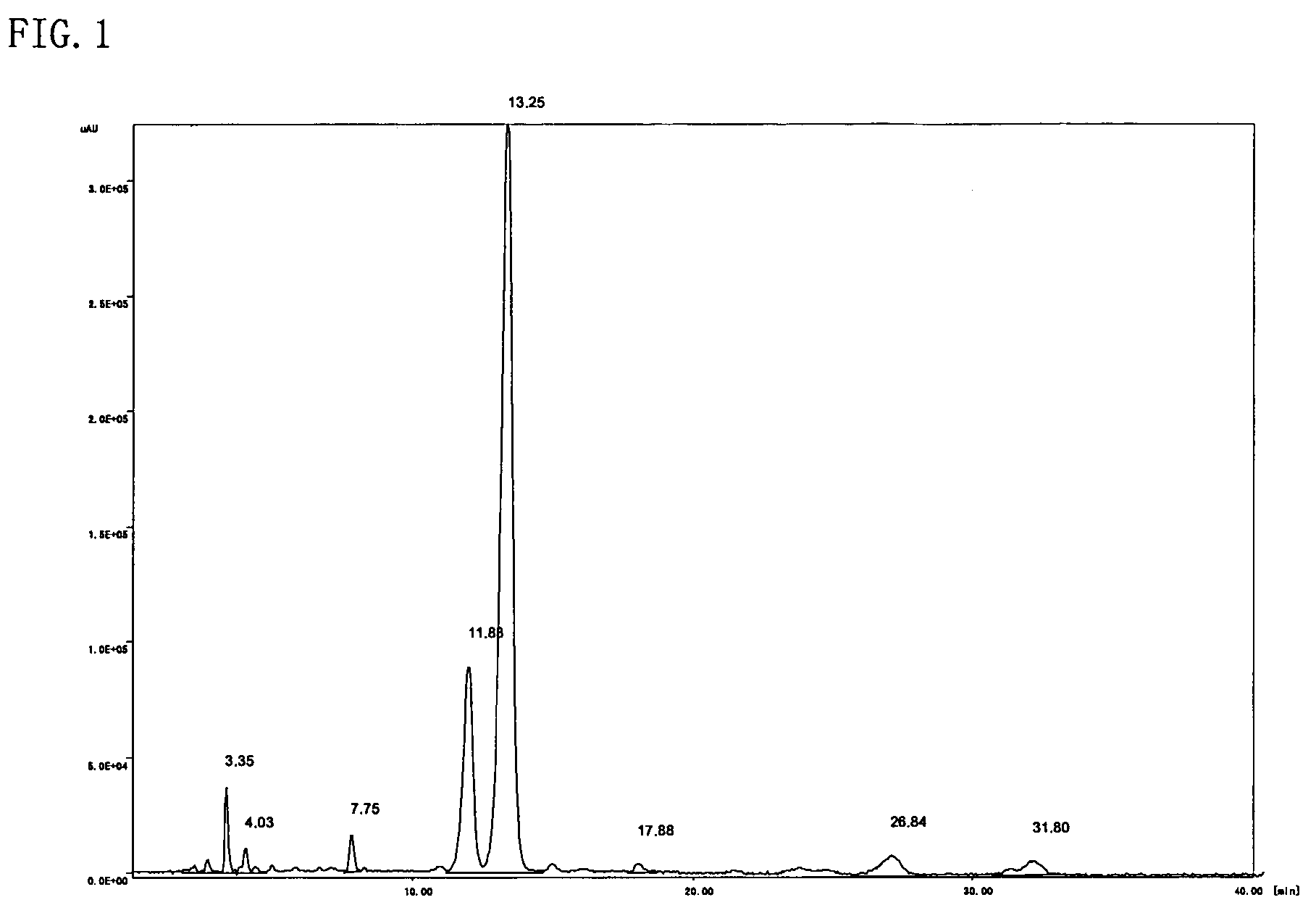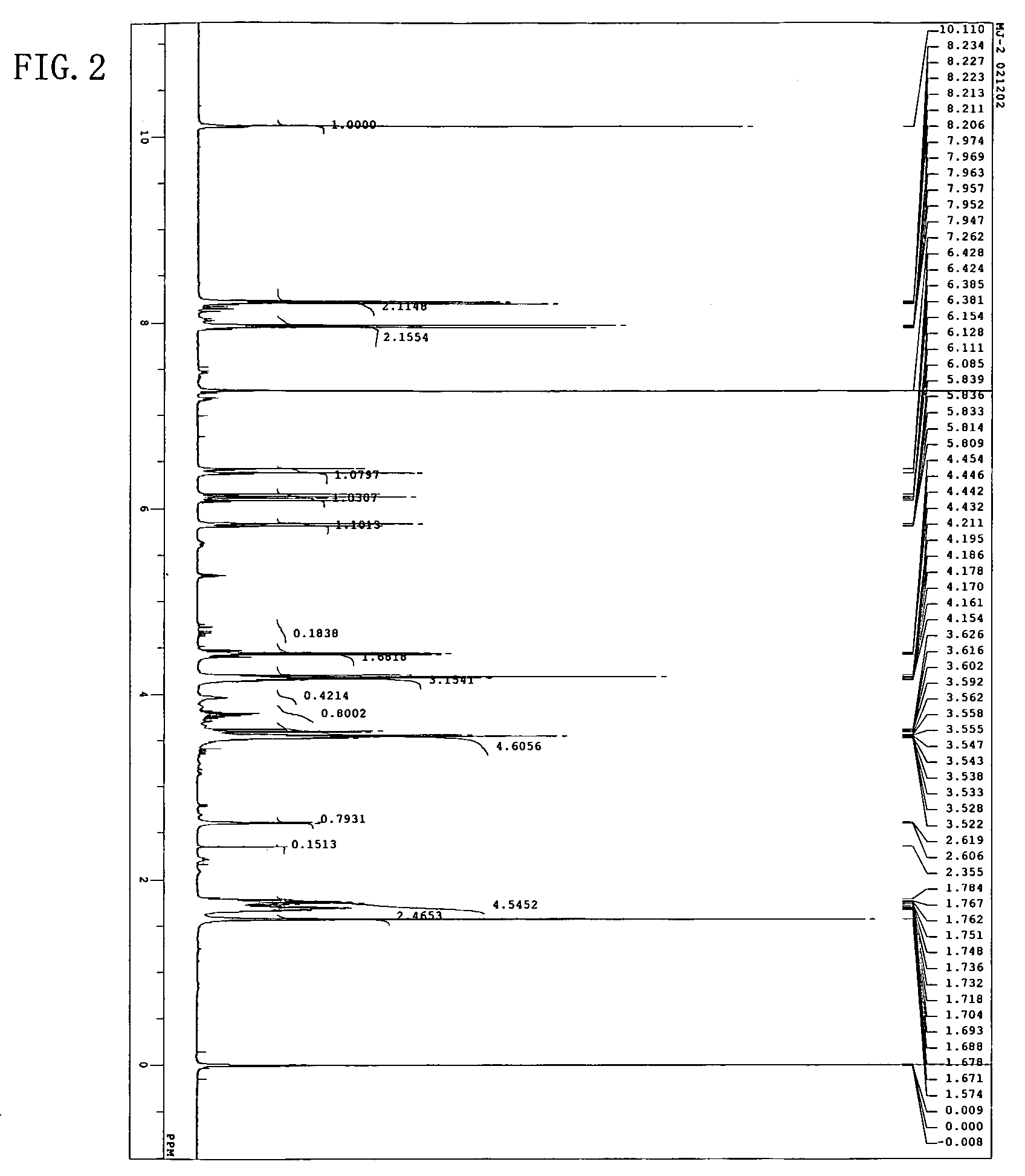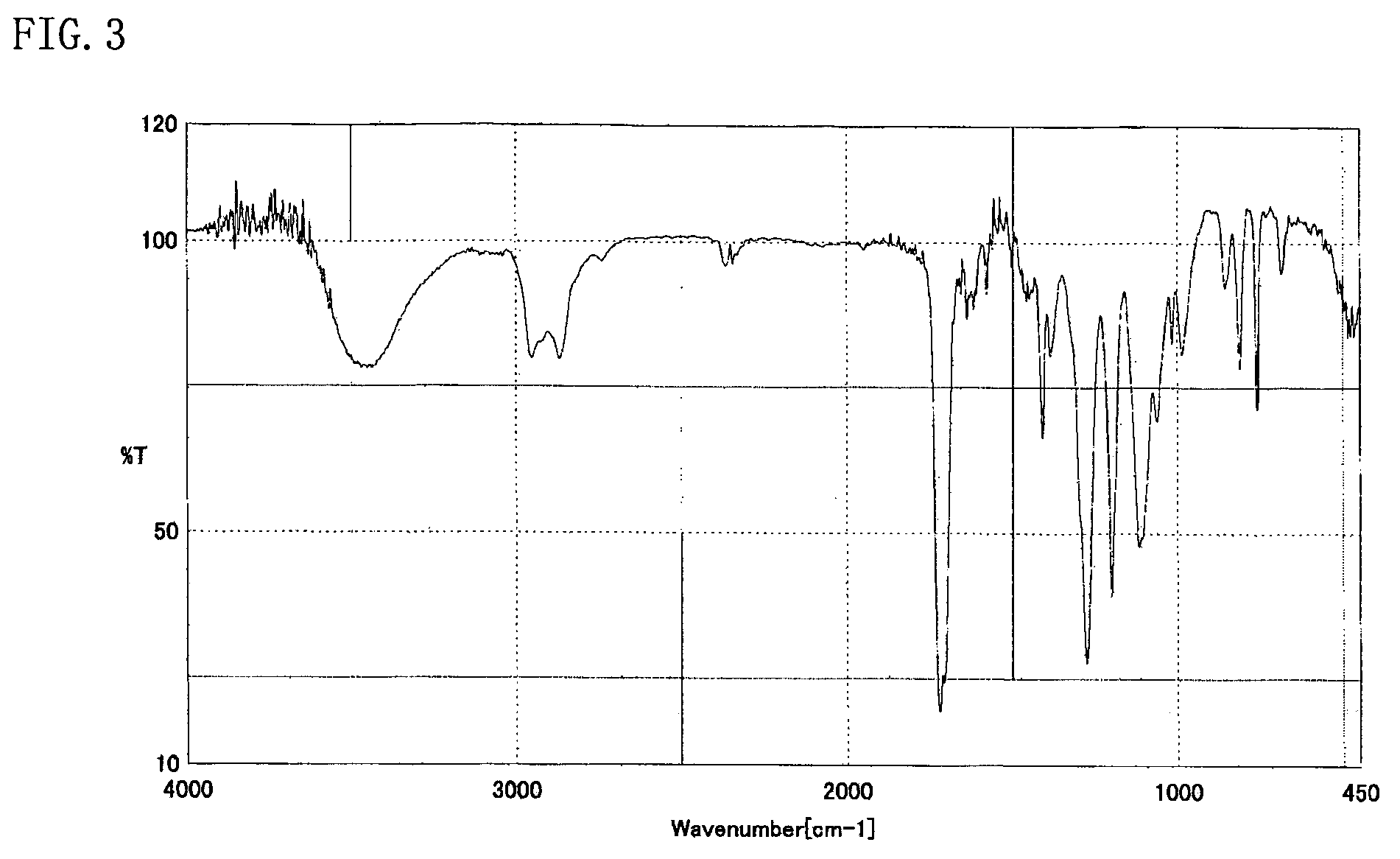Photosensitive resin based on saponified polyvinyl acetate photosensitive resin composition, method of forming aqueous gel from the same, and compound
a resin and saponification technology, applied in the field of new polyvinyl acetate-based photosensitive resins and resin compositions, can solve the problems of insufficient hardenability of pva-sbq resins, insufficient phototosensitivity of materials for use, and insufficient hardenability of resins, etc., to achieve excellent storage stability, high cure-related sensitivity, affinity and solubility
- Summary
- Abstract
- Description
- Claims
- Application Information
AI Technical Summary
Benefits of technology
Problems solved by technology
Method used
Image
Examples
example 1
[0060]Terephthalaldehyde acid (60 g), 4-hydroxybutyl acrylate glycidyl ether (4HBAGE, product of Nippon Kasei Chemical Co., Ltd.) (45 g), p-methoxyphenol (0.2 g) polymerization initiator, and N,N-dimethyl-4-aminopyridine (1.4 g) catalyst were placed in a reactor, and the mixture was stirred on a hot-water bath (85° C.) for nine hours, to thereby form a reddish-brown viscous solution. Reactivity of 4-hydroxybutyl acrylate glycidyl ether was found to be 92%.
[0061]To the resulting solution (100 g), a 5 wt. % aqueous sodium carbonate solution (100 g) was added, followed by stirring the mixture for one hour. The mixture was extracted with toluene (250 g) serving as an extraction solvent, and the toluene layer was concentrated by means of an evaporator, to thereby produce a reddish-brown viscous liquid (A).
[0062]The resulting reddish-brown viscous liquid (A) was analyzed through high-performance liquid chromatography, 1H-NMR, and IR. High-performance liquid chromatography was performed un...
example 2
[0065]Saponified poly(vinyl acetate) (polymerization degree; 1,700, saponification degree; 88%) (EG-30, product of Nippon Synthetic Chemical Industry Co. Ltd.) (50 g) was dispersed in purified water (430 g), and the dispersion was heated to 90° C., to thereby dissolve the polymer. The solution was cooled to 60° C. To the cooled solution, phosphoric acid (3.0 g) serving as a catalyst, the reddish-brown viscous liquid (A) (4.2 g) obtained in Example 1, 2-propanol (59 g) serving as a solvent, and 2,2,6,6-tetramethyl-4-hydroxypiperidine-1-oxyl (ADK Stab LA-7RD, product of Asahi Denka Kogyo K.K.) (13.6 mg) serving as a polymerization inhibitor were added, and the mixture was stirred at 60° C. for seven hours, to thereby produce a viscous solution. After cooling the solution to 45° C., a basic ion-exchange resin (Diaion WA20, product of Mitsubishi Chemical Corporation) (44 g) was added to the solution, and the mixture was stirred for two hours. After confirmation of neutral pH conditions ...
example 3
[0069]Saponified poly(vinyl acetate) (polymerization degree; 3,000, saponification degree; 88%) (OSK-9101, product of Nippon Synthetic Chemical Industry Co. Ltd.) (37 g) was dispersed in purified water (464 g), and the dispersion was heated to 90° C., to thereby dissolve the polymer. The solution was cooled to 60° C. To the cooled solution, phosphoric acid (3.5 g) serving as a catalyst, the reddish-brown viscous liquid (A) (2.9 g) obtained in Example 1, 2-propanol (116 g) serving as a solvent, and 2,2,6,6-tetramethyl-4-hydroxypiperidine-1-oxyl (ADK Stab LA-7RD, product of Asahi Denka Kogyo K.K.) (15.6 mg) serving as a polymerization inhibitor were added, and the mixture was stirred at 60° C. for seven hours, to thereby produce a viscous solution. After cooling the solution to 45° C., a basic ion-exchange resin (Diaion WA20, product of Mitsubishi Chemical Corporation) (50 g) was added to the solution, and the mixture was stirred for two hours. After confirmation of neutral pH conditi...
PUM
| Property | Measurement | Unit |
|---|---|---|
| temperature | aaaaa | aaaaa |
| size | aaaaa | aaaaa |
| temperature | aaaaa | aaaaa |
Abstract
Description
Claims
Application Information
 Login to View More
Login to View More - R&D
- Intellectual Property
- Life Sciences
- Materials
- Tech Scout
- Unparalleled Data Quality
- Higher Quality Content
- 60% Fewer Hallucinations
Browse by: Latest US Patents, China's latest patents, Technical Efficacy Thesaurus, Application Domain, Technology Topic, Popular Technical Reports.
© 2025 PatSnap. All rights reserved.Legal|Privacy policy|Modern Slavery Act Transparency Statement|Sitemap|About US| Contact US: help@patsnap.com



